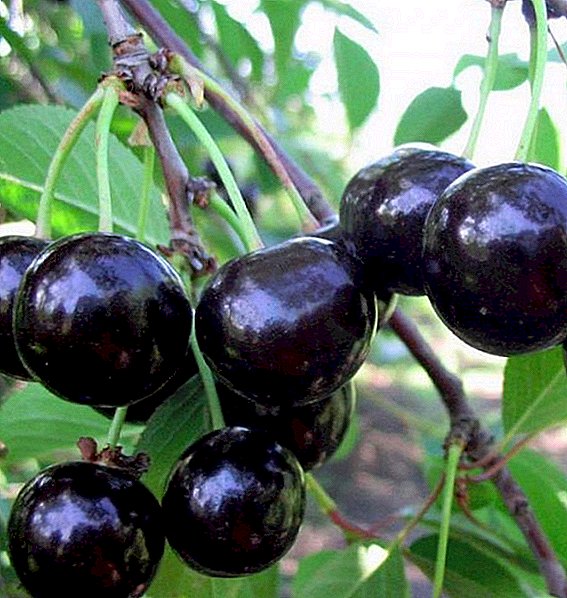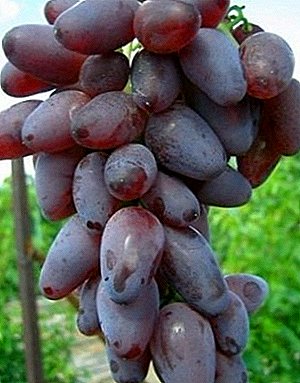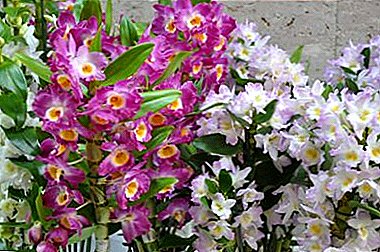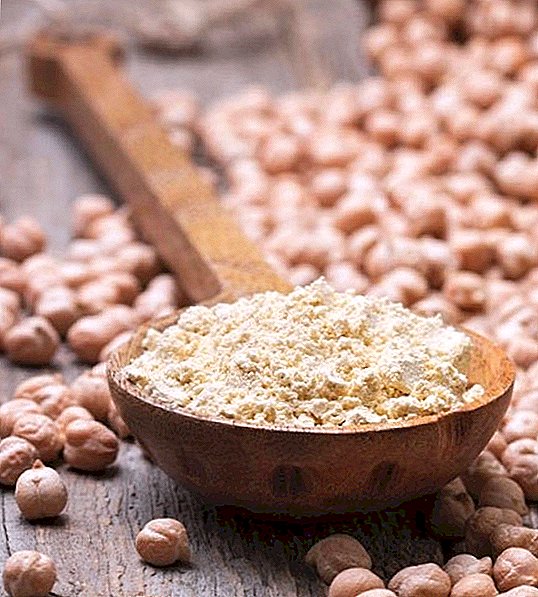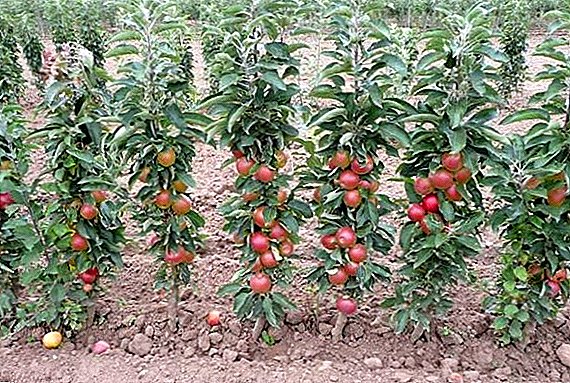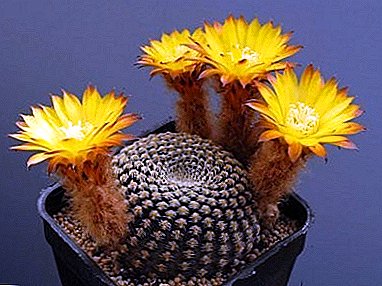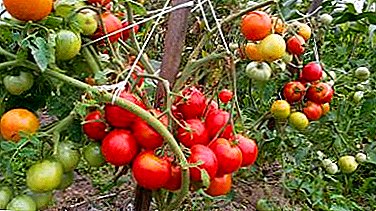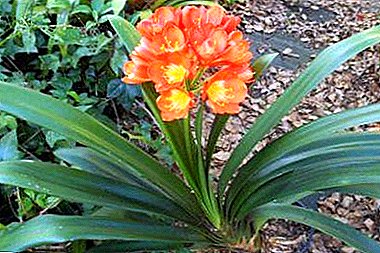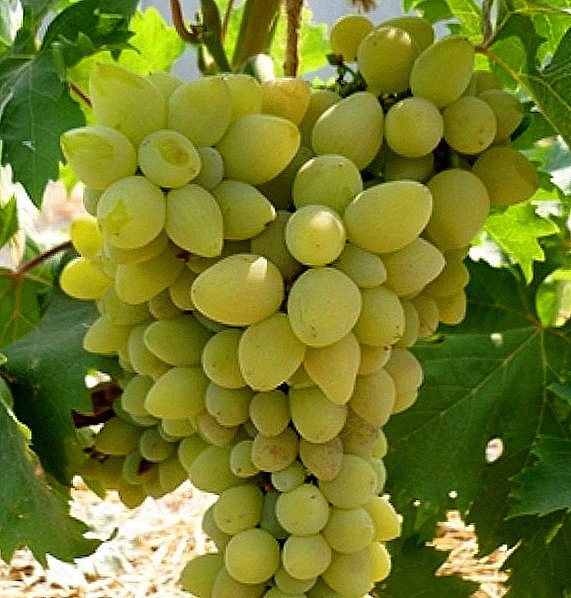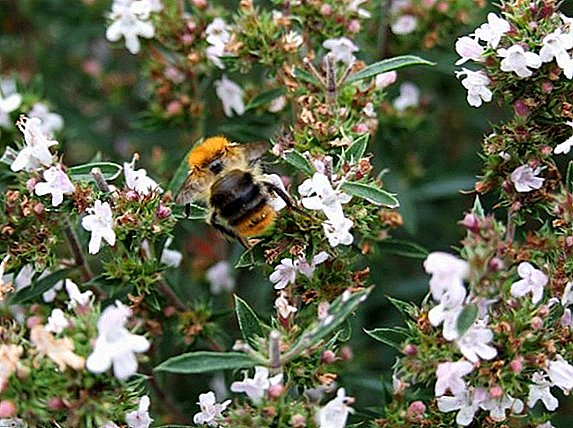 Savory or chobre, also known as pepper grass, is a very fragrant, one-year, upright, grassy rather branched semi-shrub up to 70 cm.
Savory or chobre, also known as pepper grass, is a very fragrant, one-year, upright, grassy rather branched semi-shrub up to 70 cm.
The stem of pepper grass is covered with a violet down; leaves are narrow with a sharp tip, dark green in color. The plant blooms with very small light purple, light yellow or pink flowers.
Savory is considered a good honey plant. Seeds of dark brown color, can germinate even after seven years of storage.
Oriental countries and areas of the Mediterranean are considered the birthplace of chabra. The plant has a very ancient history.
Did you know? The inhabitants of ancient Rome believed in the miraculous qualities of pepper grass. It was believed that by wearing a wreath of chaub, you can improve memory and clarify the mind. However, only representatives of the highest nobility could afford such a luxury, so over time, a wreath of pepper grass itself became a symbol of blue blood and belonging to the elite.
 Pepper herb is used mainly as a spice to give the dishes a characteristic aromatic flavor. Savory is added to meat dishes, soups, sauces, side dishes and even dairy products.
Pepper herb is used mainly as a spice to give the dishes a characteristic aromatic flavor. Savory is added to meat dishes, soups, sauces, side dishes and even dairy products.
Fresh, along with basil and coriander, pepper grass is good to add to pickles for the preservation of tomatoes, cucumbers, mushrooms. Also, this herb is used in smoking meat and sausages. The particular popularity of chabra is given by its relatively low price compared with, for example, such spices as ginger, pepper or cloves.
Did you know? In Russia, savory was fumigated with calving cows and dairy Krynki was treated - it was believed that the milk in such dishes did not turn sour longer.
Apart from cooking, pepper herb is also used as a medicinal plant: it has bactericidal and strengthening properties, improves digestion processes, and facilitates the flow of angina and respiratory infectious diseases.
Tea from chabra has a rather pleasant taste, which plays an important role in the treatment process.
How to choose a place for planting chabra in the garden
Garden savory is represented in several varieties, none of them is selective, cultivation, as a rule, occurs in open ground. However, since not everyone has the opportunity to grow savory in the garden, you can plant the plant on your windowsill and have spicy and fragrant fresh grass on hand throughout the winter. 
Where to plant savory
Pepper grass is a light-loving plant, therefore the place for its cultivation should be open, warm and sunny. In the shaded places, this fragrant grass feels uncomfortable.
Savory badly gets on with weeds, therefore before planting this grass, the site set aside for planting must be thoroughly cleaned from extraneous plants, first of all, from those that form root shoots or multiply by underground stems.
Savory can perform decorative functions, this grass can decorate an alpine hill, an artificial pond or garden paths, so when choosing a place to plant you can use the opportunity to combine business with pleasure.
What soil is needed for planting
Fertile soil, light in composition, is best suited for pepper grass. The pH level is not lower than 6. The savory grows well on loam or sandy loam soil. It is important that the soil is loose (well-aerated) and moderately wet.
Savory garden: landing rules
 Garden savory is grown from seeds, moreover, this grass reproduces perfectly by self-sowing, therefore, having properly planted the plant once, for many years to come it is possible to admire a new fragrant lawn for no additional costs.
Garden savory is grown from seeds, moreover, this grass reproduces perfectly by self-sowing, therefore, having properly planted the plant once, for many years to come it is possible to admire a new fragrant lawn for no additional costs.
When is the best time to plant savory
Garden savory is an annual plant, so the answer to the question when to plant it is obvious: in early spring, of course. You can immediately sow the savory in open ground, but it is much more efficient to grow this spice from seeds first in containers for seedlings.
Sowing is carried out in early spring starting in March. When the weather finally gets better, sprouted savory can, without worrying, be transplanted to the site previously reserved for these purposes.
It is best to do this at the end of May, and then before autumn the grass will have time to go through the full life cycle and give seeds. If savory is sown directly in open ground, this should be done a little earlier - from late April to early May, but you need to be guided by the weather, because the shoots of chabra do not tolerate frost.
 If savory is grown on a window sill, planting time does not matter so much, but given the length of daylight, the plant feels comfortable and develops normally, it is better to do so in March.
If savory is grown on a window sill, planting time does not matter so much, but given the length of daylight, the plant feels comfortable and develops normally, it is better to do so in March.
As an alternative, the winter method of sowing pepper grass is often used. After the onset of sustained cold weather, so that the seeds do not germinate ahead of time, they are sown in the grooves with a depth of 0.5-1 cm, after which the soil is well tamped down from above. Top bed can be powdered with humus or manure.
Forerunners chabra
Pepper grass grows well in places previously occupied by vegetables such as cabbage, cucumbers, tomatoes, potatoes and root vegetables, regularly fed with organic matter.
Also good precursors of pepper grass are cereal grains, as well as winter crops that have been sown on well-fertilized and rested soil. Such cultures in themselves are well cleaned from weeds, badly affecting the growth of chabra.
Bad predecessors of pepper herb are any of her relatives from the family of yarnotkie - mint and lemon balm, thyme, basil, rosemary, sage, marjoram, marjoram, etc.
Landing pattern
 Savory makes quite high demands on the fertility of the soil, so before planting the grass, the site should be fertilized and only after that sown with seeds. Compost or rotted manure is used as top dressing. The fertilized soil needs to be dug deep, leveled and watered.
Savory makes quite high demands on the fertility of the soil, so before planting the grass, the site should be fertilized and only after that sown with seeds. Compost or rotted manure is used as top dressing. The fertilized soil needs to be dug deep, leveled and watered.
Important! The savory is sown to a shallow depth - no more than 1 cm, otherwise it will be too difficult for small seeds to germinate. The distance between the rows should be about 15 cm.
In order to prepare the seeds for planting and to ensure the best germination, they must first be soaked for a day, wrapped in a damp towel, then dried and immediately sown. Such seeds germinate after 3 weeks.
Rules for the care of chabrom in the garden
To obtain a good crop of chabra, it is not enough to properly plant it, the plant also needs to be provided with proper care.
How often do you need to water the savory
 Savory needs moderate watering. During the period of seed germination, you need to ensure that the soil does not dry out by gently watering the bed every couple of days.
Savory needs moderate watering. During the period of seed germination, you need to ensure that the soil does not dry out by gently watering the bed every couple of days.
When the plant grows up, it is watered the same way as ordinary lawn grass - depending on the temperature and dryness of the earth once or twice a week.
Important! Savory does not tolerate waterlogging!
Soil care rules
For the chabra, the absence of weeds is very important, therefore the areas sown with this plant should be regularly weeded and cleaned of weeds. In addition, for the chabra, loose soil is necessary, which is especially important to control in hot weather, when the earth dries out and becomes stone.
This procedure provides the necessary plant aeration in the upper layers of the soil, and also helps to retain moisture in the ground. In addition, thanks to the loose soil, the culture is better provided with the necessary nutrients and trace elements.
How to feed a plant
Savory - an unpretentious plant, but on how you take care of him, depends on the size of the crop, and its quality.
 Before planting and immediately after harvesting the plant in the fall, the soil should be fertilized with complex mineral supplements, for example, with a nitrogen-phosphorus-potassium preparation (nitroammophoska). On a bucket of water using 15-20 g of the drug.
Before planting and immediately after harvesting the plant in the fall, the soil should be fertilized with complex mineral supplements, for example, with a nitrogen-phosphorus-potassium preparation (nitroammophoska). On a bucket of water using 15-20 g of the drug.
Also, before sowing, urea can be applied to the soil at the rate of 10-20 g per square meter. Savory also needs regular fertilizing with organic matter, this is especially important for grass grown on the windowsill.
How and when to harvest the chabra
Savory is a very useful and fragrant herb, but in order to preserve all the microelements contained in it, the crop should be harvested in the early stages of flowering (which does not exclude the possibility of picking off leaves for salad throughout the season).
Pepper grass is trimmed with a sharp knife so that shoots no higher than 10 cm are left above the ground. As a fresh plant, you can use the plant immediately or put it in a glass with water to keep the grass that has not faded for several days.
For longer storage, savory is necessary to dry. To do this, cut branches laid out in a single layer on a dry horizontal surface (preferably on fabric or parchment) and placed in a well-ventilated place, protected from direct sunlight.
 When the grass is completely dry, the leaves and flower beds should be cut off and stored in well-sealed glass containers or fabric bags. Periodically dry grass should be checked for signs of aging.
When the grass is completely dry, the leaves and flower beds should be cut off and stored in well-sealed glass containers or fabric bags. Periodically dry grass should be checked for signs of aging.
Seeds of chabra are obtained by cutting off a fully ripened plant and hanging it up for drying by flower beds down over previously spread paper. After the seeds have showered, they need to be completely dried and laid out for storage in paper bags.
Pepper grass is a rather unpretentious spice in planting and care, but its harvest, taking into account the possibilities of long-term storage, may last for several years, while during the whole warm season this beautiful ornamental plant, organically fitting into the garden landscape, will please the eye with its flowering appearance and spicy aroma, at the same time being a source of fresh greenery for an improvised picnic.


